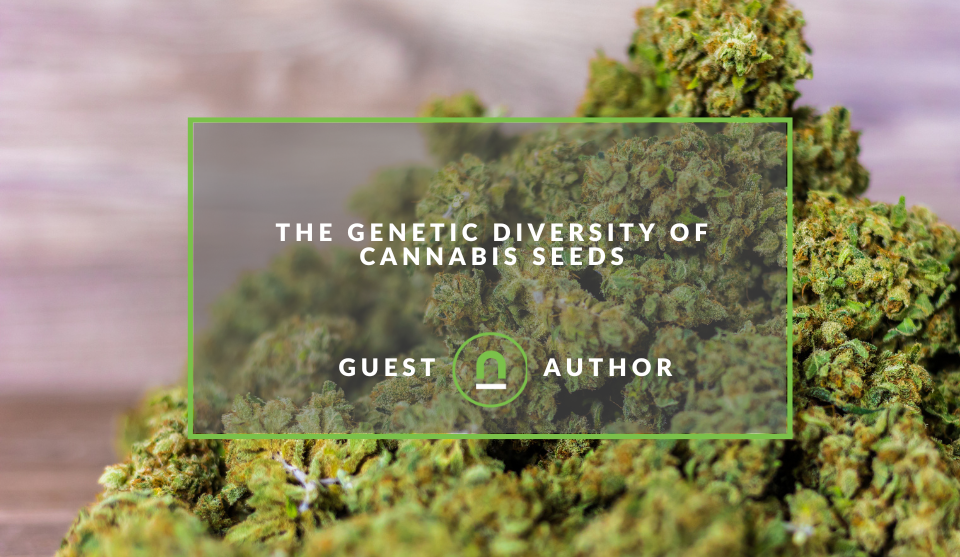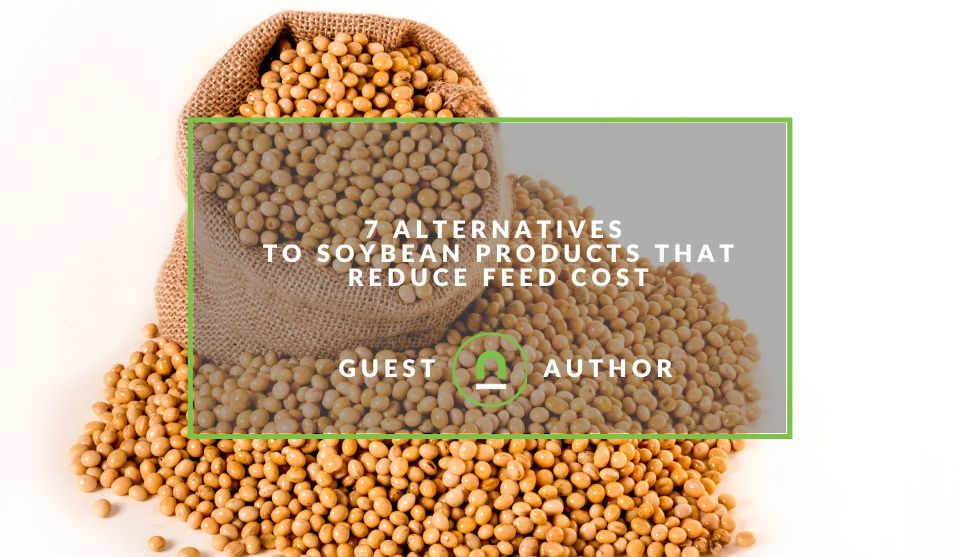Recent posts

Mind, Body & Soul
Do Not Whistle at Night: South Africas Strangest Superstitions
26 April 2025

Geek Chic
How to Replace A Broken Lenovo Laptop Screen
24 April 2025

Money Talks
Everything You Need to Know About SASSA Status Check
13 April 2025

Mind, Body & Soul
The Genetic Diversity of Cannabis Seeds
12 April 2025
Popular posts
Extravaganza
Trending Music Hashtags To Get Your Posts Noticed
24 August 2018
Geek Chic
How To Fix iPhone/iPad Only Charging In Certain Positions
05 July 2020
Extravaganza
Trending Wedding Hashtags To Get Your Posts Noticed
18 September 2018
Money Talks
How To Find Coupons & Vouchers Online In South Africa
28 March 2019
7 Alternatives To Soybean Products That Reduce Feed Cost
14 December 2022 | 0 comments | Posted by Jessica Smith in Fur, Fins & Feathers
Soybean meal has long been considered an excellent source of supplemental protein for animal feed. Because it is frequently contrasted with other protein sources, soybean meal is sometimes referred to as the "gold standard."
Soybean meal is high in highly digestible protein, made up of a superior blend of amino acids, which are the building blocks of body protein in livestock and poultry.
This article will look at seven soybean product alternatives to reduce feed costs.
Sesame meal
Sesame meal has more than 45% crude protein content, and the amino acid composition is similar to soybean meal with the same protein content, making it a perfect animal nutrition.
Sesame meal contains anti-nutritional factors in addition to high levels of phytic acid. It has a low available lysine content and a high methionine content.
The maximum amount of sesame meal can reach 30% in a diet of high-yielding layers. Notably, the quality of sesame meal is affected by the number of sesame hulls added.
Peanut meal
This ingredient has become more widely available in recent years. Peanut meal contains roughly the same amount of protein as soybean (47-48%). This protein, however, is not of the same quality as that found in soy.
Significantly, the critical amino acid lysine is severely deficient in peanut meal. Those who want this ingredient should limit it to 3 or 4% of their diet. Higher levels of peanut meal will significantly reduce lysine levels and may increase the likelihood of aflatoxin contamination.
Lupin
Lupins are primarily grown in Australia but also in parts of Asia, the United Kingdom, and Canada. Lupin's crude protein content ranges from 32% to 42% when cultivated, and its nutritional value is comparable to soybean.
The main limiting factor in animal nutrition is the number of alkaloids in lupin, but the number of alkaloids has been significantly decreased in modern sweet lupin varieties.
Furthermore, due to its high crude fibre content (25%), the lupin used in broiler feed is reduced, resulting in low energy concentration. Pectin, which makes up a large portion of the crude fibre, can increase the viscosity of the intestinal chyme. The issue of lupin's high fibre content can be resolved by removing the hull, fine grinding, and adding the correct quantity of enzymes.
Cottonseed meal
Cottonseed meal contains slightly less protein than soy (approximately 42%) and does not contain lysine like a peanut meal. Cottonseed meal is usually limited to 4-5% of the diet unless synthetic lysine can be added.
Gossypol is a compound found in cottonseed meals that, at high concentrations, can inhibit growth and discolour egg yolks. However, levels of inclusion of 5% should not cause noticeable problems in the backyard flock.
Sunflower meal
Sunflower seed cake (meal) is the by-product of sunflower seed oil extraction. It has a crude protein content of 30% to 43%. The amino acid composition is better, with a higher methionine content and a lower lysine content than soybean meal, making it more suitable for use with soybean meal.
Sunflower meal has low tannin, erucic acid, and phenolic compounds, making it palatable and a good protein feed in fish and shrimp feed. Its nutritional value is primarily determined by the degree of dehulling. Although completely dehulled sunflower seed meal has a high nutritional value, it is relatively scarce on the market (primarily used in feed in Russia, Ukraine, and Kazakhstan).
Guar Soybean meal
Guar is a legume plant grown extensively in India, Pakistan, and parts of the United States, among other places. Guar is primarily used to make mannogalactan gum as a binder in the paper and pigment industries.
After guar extracting mannogalactan gum, the residual meal contains 50% crude protein. Mannogalactan gum is the main anti-nutritional factor. By adding appropriate enzymes, this anti-nutritional factor can be decomposed.
The results of guar meal in animal feed field trials vary greatly, most likely due to the wide range of its quality. Before the quality of a guar meal is fully established, poultry nutritionists advise using it with caution in broiler diets.
Palm meal
A significant amount of palm meal is used in livestock and poultry products due to the rapid growth of the palm oil industry in Asia, Australia, South America, and Africa. Although the crude protein content of palm meal is low (less than 18%), it remains a popular feed raw material due to its ability to reduce animal husbandry production costs significantly.
Palm meal is low in lysine and methionine and has average digestibility. However, because it contains more energy, it can become an ideal part of the diet's total protein composition. Palm meal has a relatively high crude fibre content (up to 20%).
Palm meal and corn bran are similar in many ways. More so than its nutritional makeup, palm meal's sandiness and physical qualities are to blame for many of the detrimental effects seen in the production of broilers. As a result, despite its limited nutritional composition, palm meals can be used relatively freely in broiler diets.
Bottomline
Soybean meals can be replaced with other feed ingredients. Small crops and agricultural by-products are abundant throughout the world. Each raw material has a unique set of opportunities and limitations.
When dealing with unknown feed material, a cautious approach is taken. Professional nutritionists will reduce feed and animal production costs by using appropriate laboratory analysis, improving the database, and applying logical principles.
Adding all these alternative protein materials to poultry starters (except peanut and cotton meals) is not recommended. High-quality protein raw materials benefit chicks, and the farm can achieve better cost savings in the late stage of production when chicken feed intake is at its peak.
Tell us your story
Would you like to write for nichemarket just like Jessica has? Find out how to submit a guest post, and when you're ready, you can contact us.
Are you looking to promote your business?
Farming businesses can create your free business listing on nichemarket. The more information you provide about your business, the easier it will be for your customers to find you online.
Registering with nichemarket is easy; all you will need to do is head over to our sign-up form and follow the instructions. If you require a more detailed guide on how to create your profile or your listing, then we highly recommend you check out the following articles.
Recommended reading
If you enjoyed this post and have time to spare, why not check out these related posts and dive deeper down the rabbit hole that is farming and gardening.
- When To Plant Herbs During The Year In The Western Cape
- Which Vegetables To Plant During The Year In The Western Cape
- 7 Tips to Protect Gardens During Hot Weather
Tags: Feed, Animals, Farming, Guest Post
You might also like
The Genetic Diversity of Cannabis Seeds
12 April 2025
Posted by Alina Jones in Mind, Body & Soul
A look into the South African heritage of cannabis growing and how the country has taken the plant in terms of growing it into a viable industry & th...
Read moreEverything You Need to Know About SASSA Status Check
13 April 2025
Posted by Azhar Khanzada in Money Talks
A guide for 2025 for anyone looking to apply for a SASSA grant or would like to keep up to date with the status of your grant from application to red...
Read more{{comment.sUserName}}
{{comment.iDayLastEdit}} day ago
{{comment.iDayLastEdit}} days ago
 {{blogcategory.sCategoryName}}
{{blogcategory.sCategoryName}}
